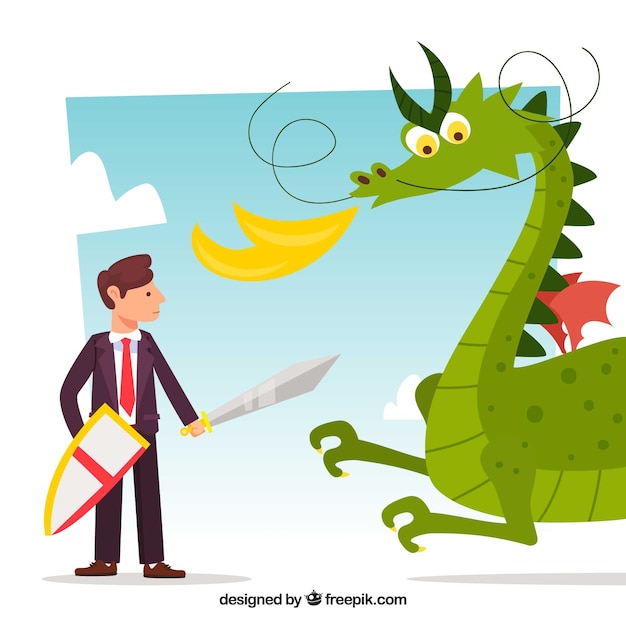Fascinating Facts about Dragons

Dragons are mythical creatures believed to have existed in various ancient cultures.
Dragons are often depicted as large, fire-breathing creatures with wings and scales.
The word dragon derives from the Greek word drakon, meaning serpent or sea monster.
In Chinese culture, dragons are seen as symbols of power, strength, and good luck.
Dragons are known to have a special affinity for treasure and are often portrayed guarding it.
Dragon legends and stories can be found in folklore from countries all over the world, including Europe, Asia, and the Americas.
According to Norse mythology, dragons played a significant role in the creation of the world.
Some legends describe dragons as shapeshifters, capable of taking on human form.
In Japanese mythology, dragons are seen as water deities and are believed to control rainfall and bodies of water.
Dragons have been a popular subject in literature and have been featured in famous works such as The Hobbit by J.R.R. Tolkien and A Song of Ice and Fire by George R.R. Martin.
Komodo dragons, found in Indonesia, are the largest living species of lizard and are often referred to as living dragons.
Ancient Egyptians believed that dragons held the power of creation and destruction.
European legends often depict dragons as fearsome creatures that terrorize villages and hoard treasure.
In Hindu mythology, dragons are known as nagas and are associated with water and the underworld.
Fascinating Facts about Dragons part 2
Dragon bones and fossils have been discovered in various parts of the world, adding to the belief that these creatures might have existed at some point.
Many medieval European castles have dragon-inspired architecture and decorations.
Chinese New Year celebrations often feature vibrant dragon dances, believed to bring good luck and fortune.
The flying serpent Quetzalcoatl, known as the Feathered Serpent, was a central figure in Aztec mythology.
The belief in dragons is not limited to ancient times, as there have been reported sightings and encounters in modern times.
Dragons are often portrayed as highly intelligent creatures with a strong sense of honor and loyalty.
In Welsh folklore, dragons are associated with the national identity and are considered a symbol of strength and leadership.
The Chinese zodiac includes the Year of the Dragon, which is believed to be a particularly lucky and prosperous year.
Dragons are sometimes associated with wisdom and are imagined to possess ancient knowledge.
The breath of a dragon is often described as fire, but some legends also mention dragons with ice or poison abilities.
Dragons have been featured in various video games, movies, and TV shows, becoming a popular fantasy creature in modern culture.
In Greek mythology, the dragon Ladon guarded the golden apples in the Garden of the Hesperides.
Dragons are often used as heraldic symbols, adorning coats of arms and flags of certain families or regions.
The legend of Saint George slaying a dragon is one of the most well-known dragon tales.
Some dragon legends describe them as shapeless primordial beings with immense power.
Dragons are often associated with the element of fire and are believed to reside in caves or volcanic lairs.
Dragon symbolism is also associated with the natural forces of the Earth, such as rivers, mountains, and forests.
Dragons are often depicted as wise, ancient beings who have witnessed the passage of time.
According to some legends, dragons have the ability to understand and speak human languages.
Dragon mythology varies from culture to culture, leading to different interpretations of their appearance and behavior.
Dragons are popular creatures in fantasy role-playing games, often serving as powerful and formidable enemies or allies.
Despite being portrayed as dangerous creatures, some legends depict dragons as protectors of the natural world.
Dragons have been depicted in artwork throughout history, showcasing their majestic and awe-inspiring presence.
In Islamic mythology, dragons are believed to be creatures created by Allah with a purpose.
Dragons are often associated with the celestial realm and are believed to have the ability to fly between the worlds.
Dragons are thought to have a long lifespan, with some legends suggesting they can live for hundreds or even thousands of years.
Dragon mythology is deeply rooted in human culture and has been passed down through generations.
Dragons have been a source of inspiration for tattoo designs, with their intricate scales and fierce appearances.
Dragon bones were believed to possess magical properties in ancient Chinese medicine, often used as an ingredient in remedies.
Various fictional books and series, such as the Dragonriders of Pern by Anne McCaffrey, have created detailed and elaborate dragon lore.
Dragons continue to capture the imagination of people worldwide, representing both the untamed forces of nature and the limitless potential of the human mind.

